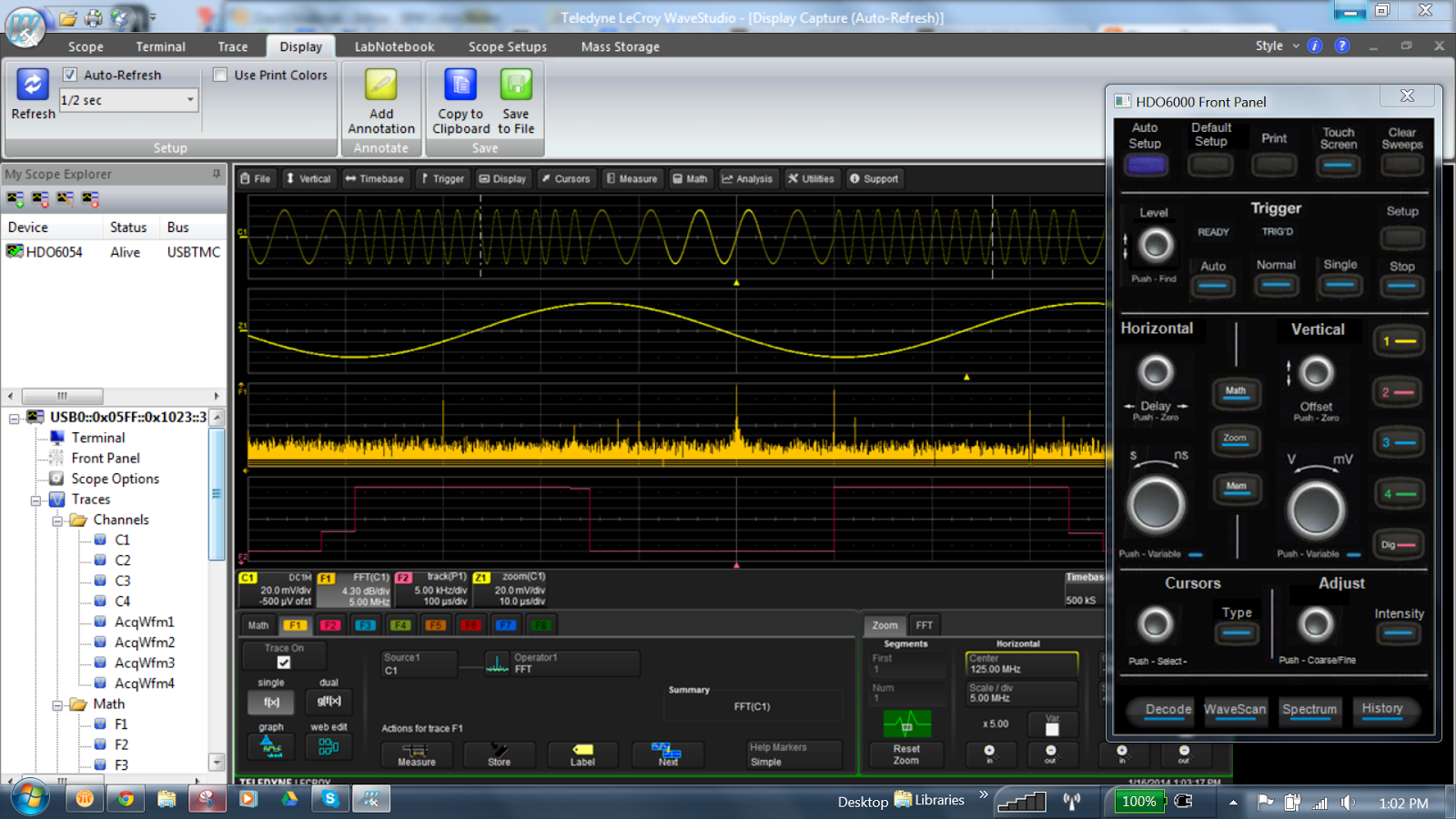 |
| Figure 1: WaveStation software enables full remote control of an oscilloscope from a Windows PC |
The marriage of oscilloscopes and PCs isn't new, of course, but the latest generation of instruments, PCs, and software for remote control of test equipment has taken that marriage to new heights. Let's look at some of the things one can do with Teledyne LeCroy's WaveStudio software, which is freely downloadable from the company's website and is compatible with many of its oscilloscopes (Figure 1). It's fairly representative of software of this nature from the various oscilloscope makers.
First, the software allows users to connect the instrument to the PC in various ways, including LAN, USB, RS-232, or GPIB interfaces. Establishing the link between the two is a simple matter. Once that's accomplished, you're off and running. The broad categories of tasks that WaveStudio facilitates are captures, viewing, analysis, and documentation.
 |
| Figure 2: WaveStudio's Display Capture function lets you control the oscilloscope from remote locations |
Display Capture is a particularly handy tool, as it makes for easy screen captures. Moreover, if you're controlling an LAN-connected oscilloscope in the lab from somewhere else in the facility, it's nice to be able to see the screen at update rates of as often as four times per second. Clicking on the screen with a mouse controls it just as if it were in front of you. If you prefer to do things via the front panel, you can have that too (Figure 2).
 |
| Figure 3: A host of built-in measurements give WaveStudio an edge in terms of waveform analysis |
One of the best things about software like WaveStudio is the analysis capabilities it brings to the table. The software provides x and y cursors for quick timing and amplitude measurements. Users can also turn on 21 built-in measurements for a more accurate profile of a waveform (Figure 3).
 |
| Figure 4: WaveStudio helps users to document waveforms |
All of the above serves to illustrate what the marriage of oscilloscopes and PCs delivers to users. Remote-control software opens a lot of doors to creative uses of oscilloscopes, documentation of measurements, and ease of analysis. Let us know how you're using WaveStudio or any other remote-control software you may be using.
5 comments:
it if important to note that you can also use SCPI / IVI-COM commands to create your own GUI tools as required for various OEM test gear. See http://www.ivifoundation.org for details. Additionally in your GUI you can create your own SCPI editor to create custom automation scripts. Besides obvious automated measurements, this is also important to perform repeated regression tests required by ISO, FCC, FDA, and other standards tests BEFORE your product prototype goes to the standards evaluation lab.
Hi, how to combine three *.trc files (each containing waveform from one channel) in WaveStudio into a common time base that e.g. if I zoom an event on one channel, other two waveforms would be zoomed accordingly?
Kubsztal:
Wavestudio cannot display multiple saved trace files on a single display. As of now, Wavestudio displays only one trace file at a time.
What one can do, however, is import up to four saved .trc files into memories (M1 thru M4) in a Teledyne LeCroy oscilloscope. Then the oscilloscope can display all four recalled traces on a single display.
As to zooming these traces, use multizoom in the oscilloscope to change horizontal zoom and position together.
You should add the possibility to display multiple saved trace on one single grid as all your competitor did. if not, wave studio is unusefulfor!
I like this concept. I visited your blog for the first time and became your fan. Keep posting as I am going to read it everyday.
Error Code 0xc0000098
Post a Comment